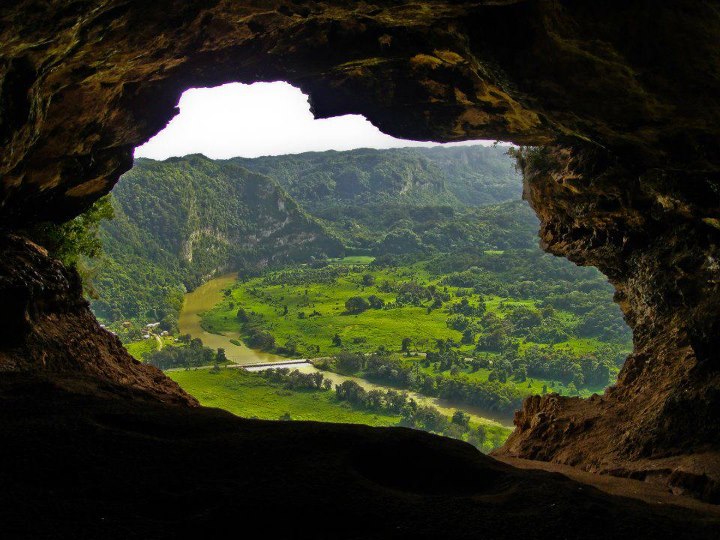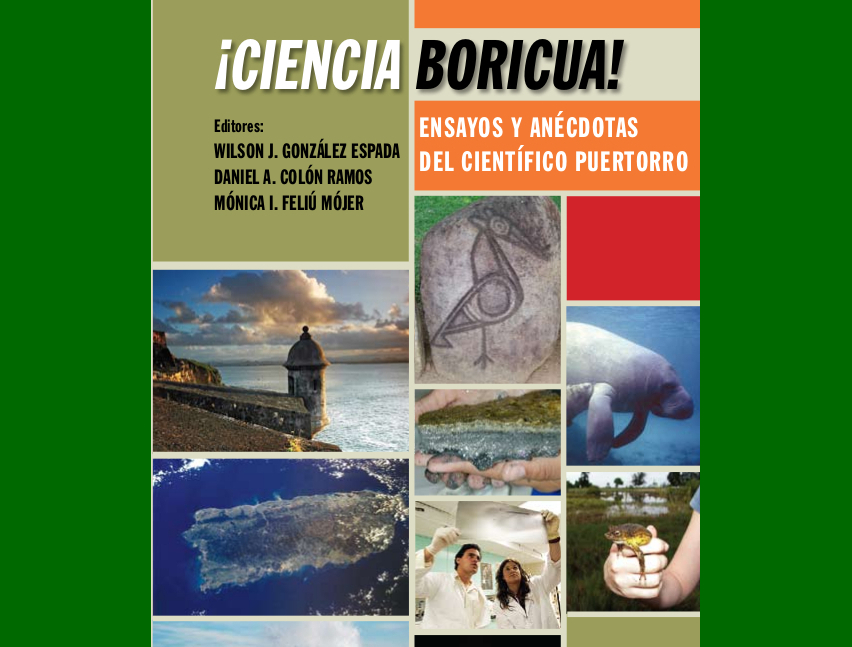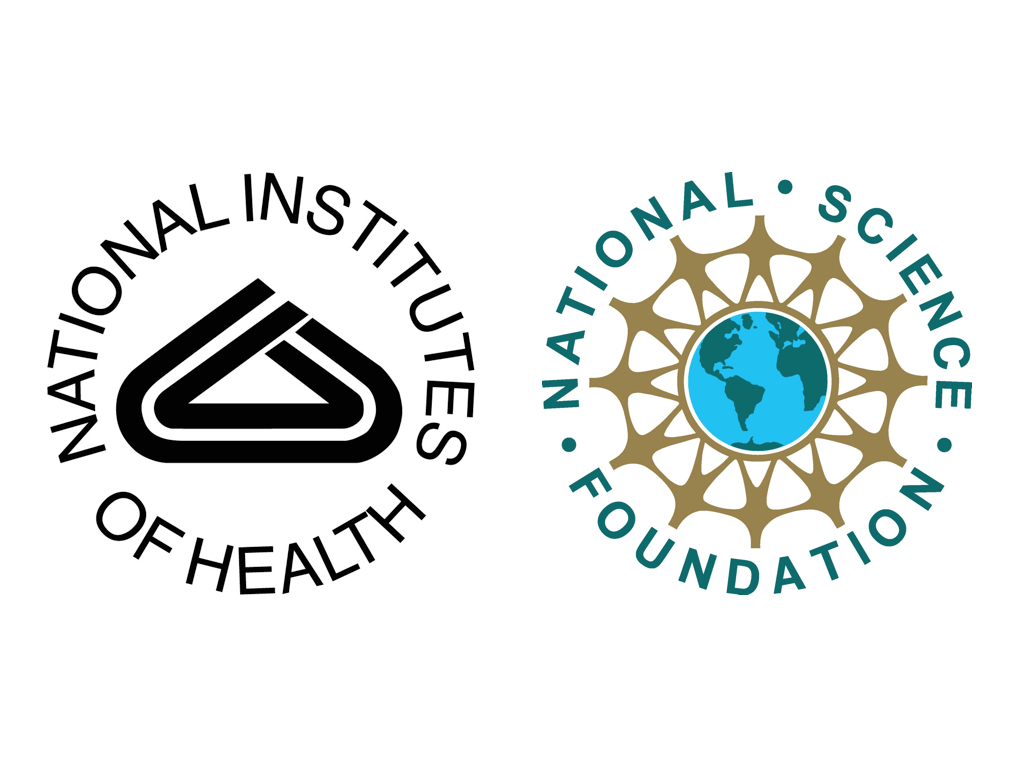Forging an education at the service of Puerto Rico
Submitted by Greetchen Díaz-Muñoz on
We are launching the Educación al Servicio (Education in Service) Blog! To being, we would like to review our CienciaPR initiatives and contributions in the area of STEM Education (Science, Technology, Engineering and Mathematics) and how these have evolved to influence the educational environment within and outside the classroom.
From the website to the classroom
Since the beginnings of CienciaPR, we have carried out informal educational initiatives, that is, activities outside of the classroom aimed at a non-expert audience. Through a portal full of podcasts, blogs and profiles; hundreds of science articles published in local newspapers; and an anthology of essays called Ciencia Boricua, we sought to explain science “in rice and beans”, provide information based on scientific data, and highlight scientists from Puerto Rico. Over time, much of this educational material produced by members of CienciaPR began to be used by students and educators in Puerto Rico as a reference and as a supplementary resource for science and math classes.
Inspired by the enthusiasm for these resources, in 2011 we launched the Ciencia Boricua Project as our fist formal educational initiative. Through this project, educators were trained to integrate the Ciencia Boricua book to their courses and students carried out literature research and science communication projects after reading the essays. In this way, we promoted a contextualized education, through which scientific concepts were made relevant to the culture and lives of the students. The project demonstrated a positive effect on students' attitudes towards science and confirmed the impact that a community like CienciaPR could have in the formal science education space.

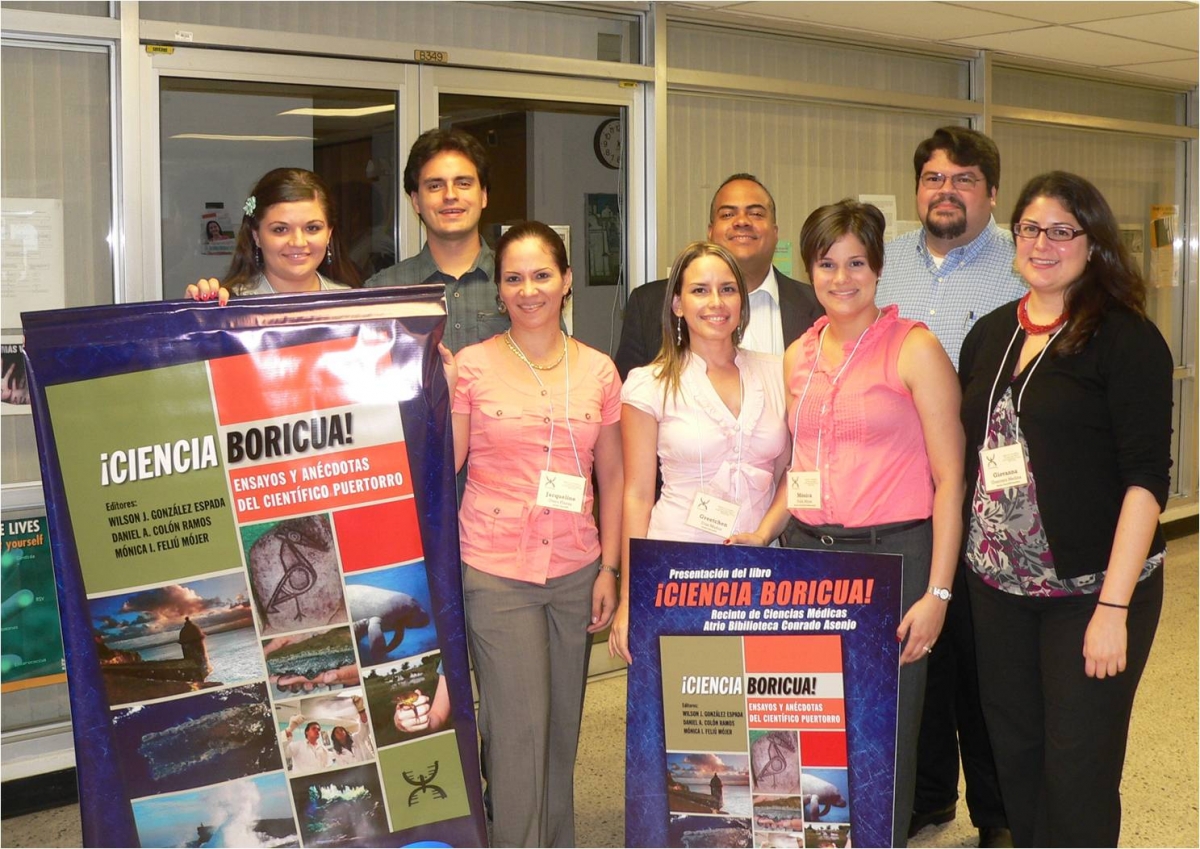
Since then, making science education and communication culturally relevant has been a strategy that CienciaPR has employed in all its initiatives. In fact, we consider ourselves a pioneer organization that has managed to innovate this concept in many ways. Ciencia Boricua, was probably the first anthology of science essays written by Puerto Rican scientists for a Puerto Rican public, and certainly the first to be used in the classroom. Similarly, before Ciencia a tu alrededor (Science is All Around You), there was never a series of videos for educators and middle school students about space exploration, where the protagonists were scientists and engineers from Puerto Rico. This resource contains guides for 7th – 9th grade educators, that facilitate the integration of the videos to classroom teaching and can help discuss, in a contextualized way, complex topics in subjects such as physics and chemistry.

Another one of our educational innovations has been the first local STEM girl’s ambassador program. In 2015, CienciaPR launched Semillas de Triunfo (Seeds of Success), an informal education program to motivate middle and high school girls to become interested in STEM disciplines through activities and exposure to Latina scientists and engineers who serve as role models and mentors. Moreover, the program seeks to sow in them the seed of leadership through community outreach projects that they must organize to impact additional people. The projects carried out by middle school girls in 2015 managed to impact more than 10,000 people throughout Puerto Rico. This year we are running our second edition with high school girls.
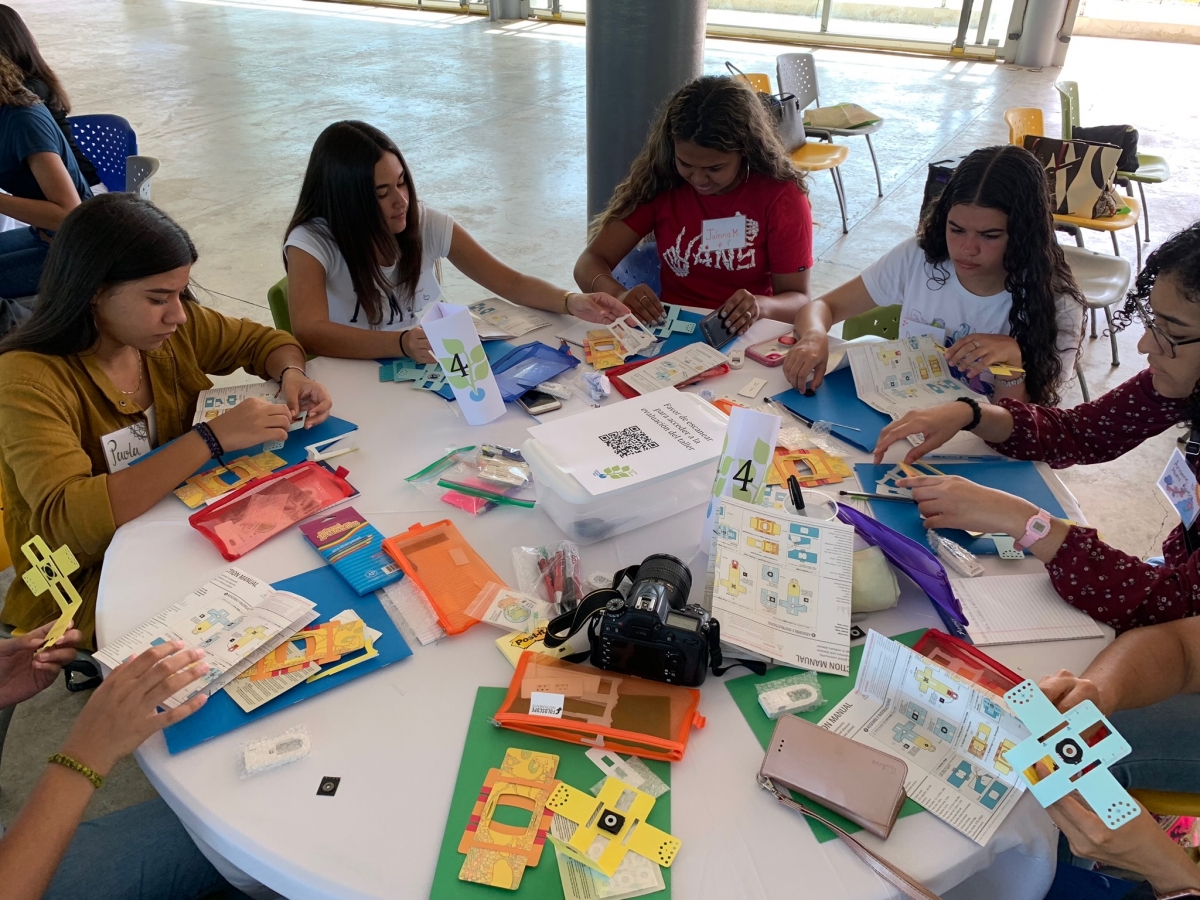
Science at service
The experiences with the Ciencia Boricua and Semillas de Triunfo allowed us to reach K-12 educators and students directly and to learn more about the best practices and models for culturally relevant STEM education. In 2017, we launched a new strategic plan focused on democratizing and transforming science education in Puerto Rico and for this purpose we created a formal Science Education Program to manage our initiatives in K-12 education. In the midst of planning our flagship program, Hurricane Maria hit Puerto Rico and caused a needed pause in our plans. However, a great opportunity arose to investigate the feasibility of using project-based learning (PBL) lessons that were contextualized to the topic of the hurricane, that could be implemented after a natural disaster, and to know the effect of these lessons on the student’s attitudes. In K-12 education, PBL lessons have demonstrated to be effective ways of imparting STEM concepts, while increasing a greater number of students’ interest and engagement in STEM. The use of the Post-Hurricane PBL Lessons, subsidized by the National Science Foundation, was the first project of the Science Education program and allowed us to lay out the foundations once we did launch our flagship program, “Ciencia al Servicio” (Science in Service) in 2018.
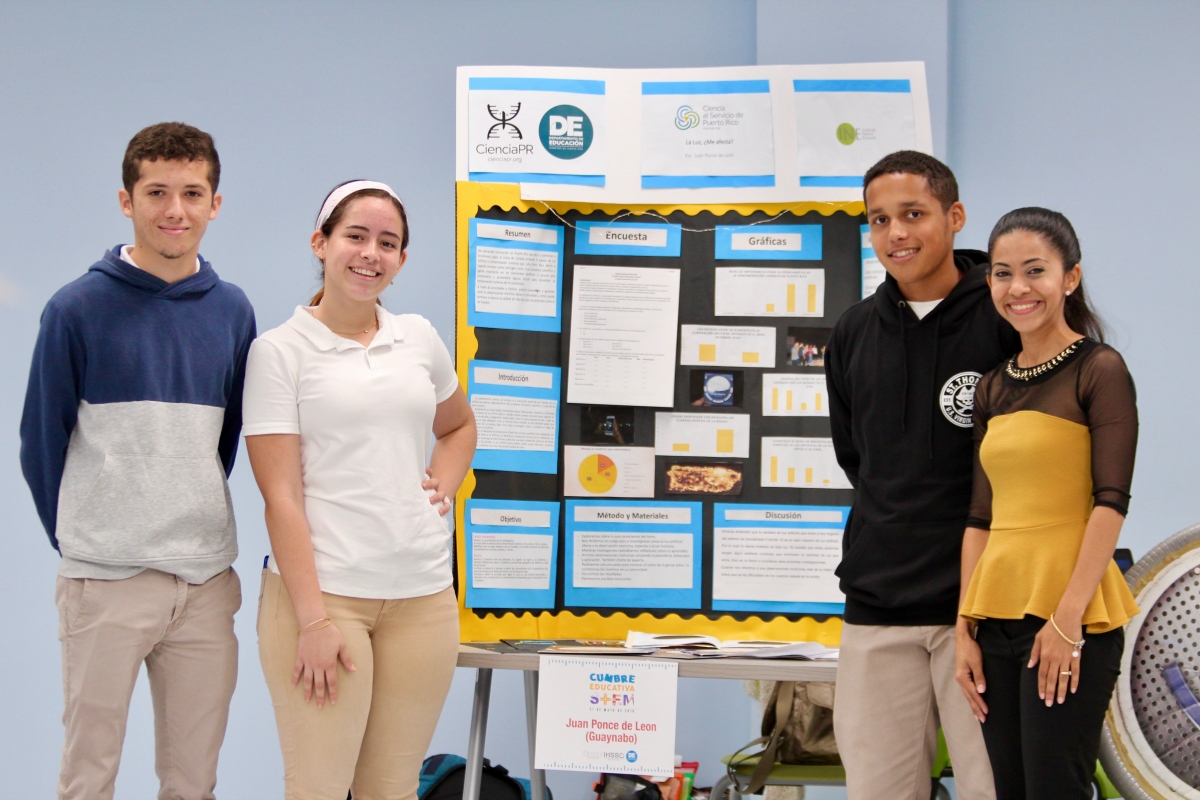
Through Ciencia al Servicio, every summer we bring together educators and STEM experts to jointly develop PBL lessons aligned to science educational standards. Participating teachers implement their PBL lessons during the school year to provide culturally relevant educational experiences, promote citizen integration and student service, and to foster critical thinking and the development of positive attitudes towards science. At the same time, the STEM experts visit participating schools to motivate students and serve as role models, while practicing their skills in scientific communication. CienciaPR's work extends throughout the school year by providing follow-up to educators and STEM professionals to ensure the success of the PBL lessons and school visits. Finally, students who participate of the PBL lessons have to report the results of their projects to the community through outreach activities. In this way, the Ciencia al Servicio project has impacts on multiple levels!
Another project that encourages the integration of STEM professionals and the community is Astronomía al Servicio (Astronomy in Service), which began with the donation of telescopes to about twenty schools throughout Puerto Rico. The purpose of Astronomía al Servicio is to encourage the creation of astronomy clubs and the use of the instrument in class and for the benefit of the community, as well as to motivate students through the visits of STEM professionals. The project trained educators to use the telescope and brought international experts for trainings in astronomy concepts and teaching strategies.
Scientists to the schools
Providing STEM role models with whom students can identify has been one of our key educational strategies, both inside and outside the classroom. Many of our “Borinqueñas” (female STEM role models) participate in the Semillas de Triunfo workshops and dozens of STEM professionals visit schools as part of the Ciencia al Servicio and Astronomía al Servicio projects.
Many additional STEM professionals who are members of the CienciaPR network have the desire to visit schools to tell their stories, talk about their research, and motivate students to be interested in these disciplines. However, if they do not collaborate with a particular project, they are limited in their access to schools and ability to coordinate visits. In light of this, we have recently launched Científicos al Servicio (Scientists in Service), to facilitate the participation of STEM professionals in Puerto Rico schools and connect them with our initiatives.
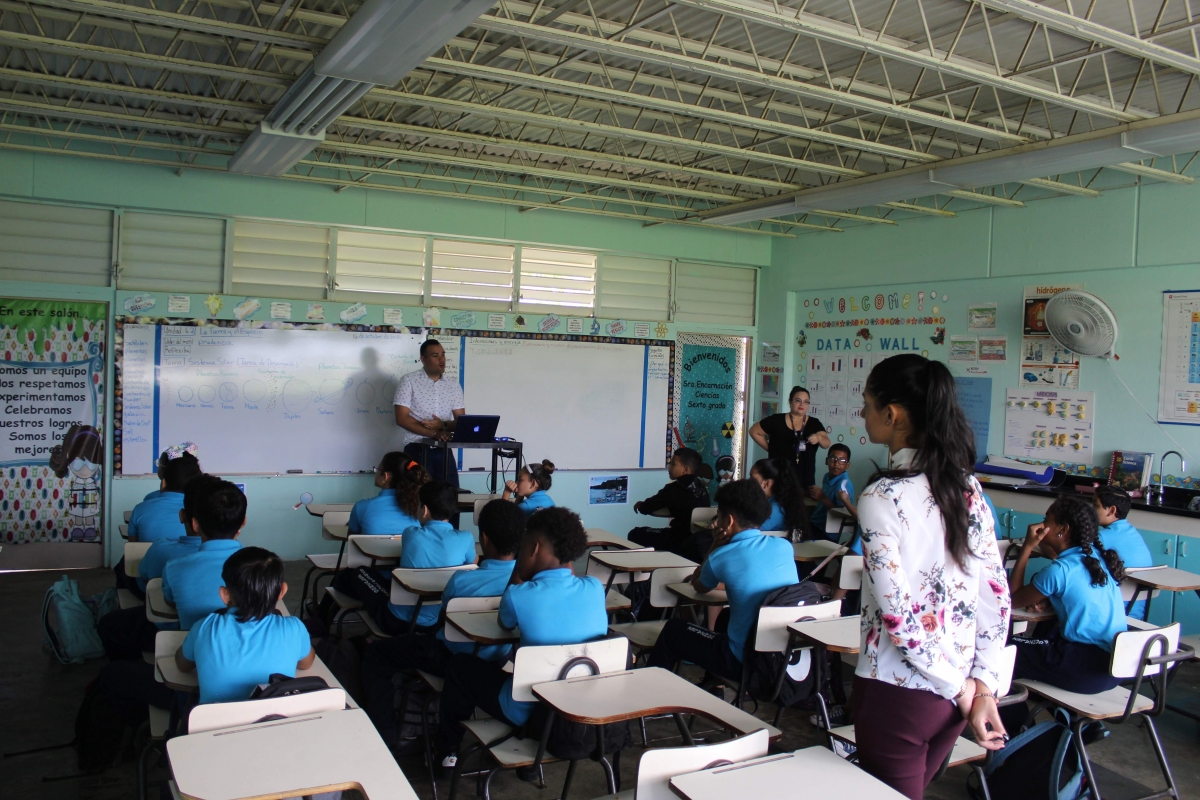
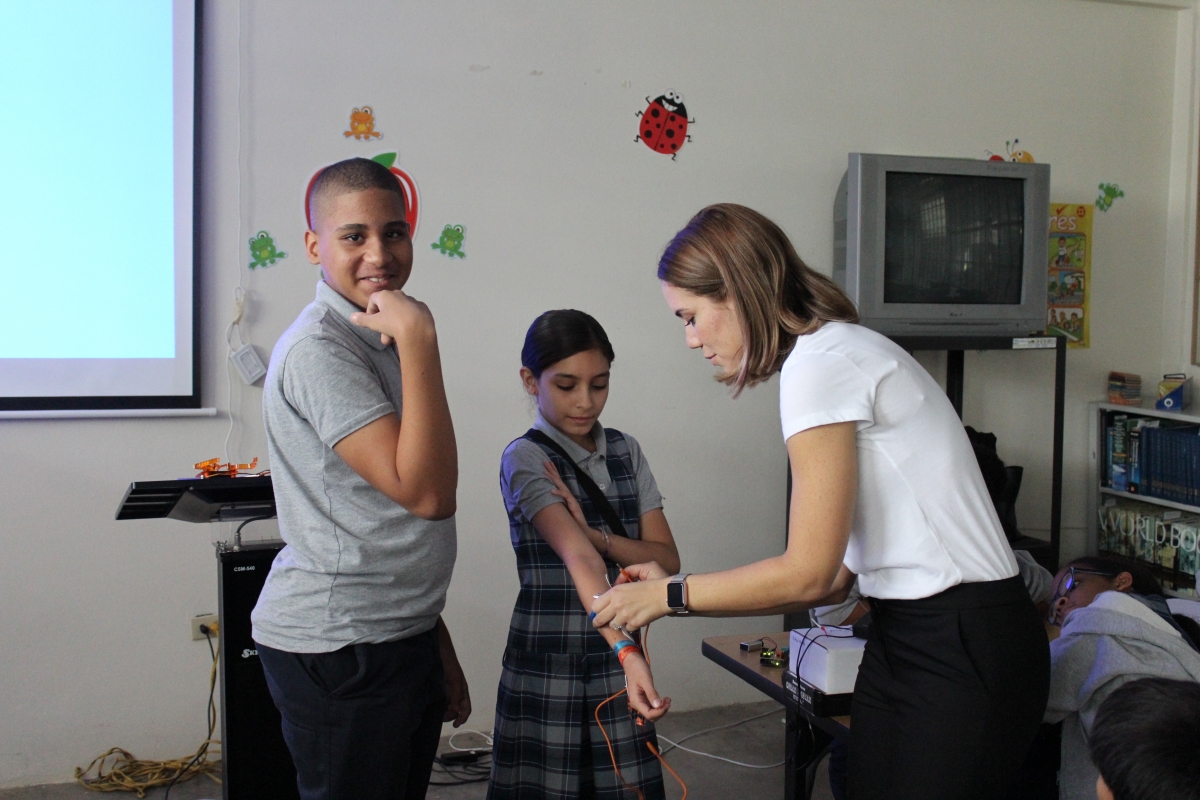
Everything in our side
Through our education initiatives, we aim to transform the way science is taught, so that more boys and girls can experiment the thrill—and the cognitive and social benefits—of research and discovery. With almost 11,000 scientists, engineers, educators and students who are part of our online community, and thousands more who follow our social networks, we have an incredible resource at our disposal to achieve this goal. Very few countries can claim to have access to such an amount and quality of human talent; much less to having such a big community of brilliant minds waiting for the next initiative to which they can add their skills and desires to contribute to a better Puerto Rico. We have everything in our side. And you? Are you already part of the transformation?
Photos: José R. Madera, Flavia Tejeda, Ollala Duato, Elvin Estrada y Robert Rabelo.






